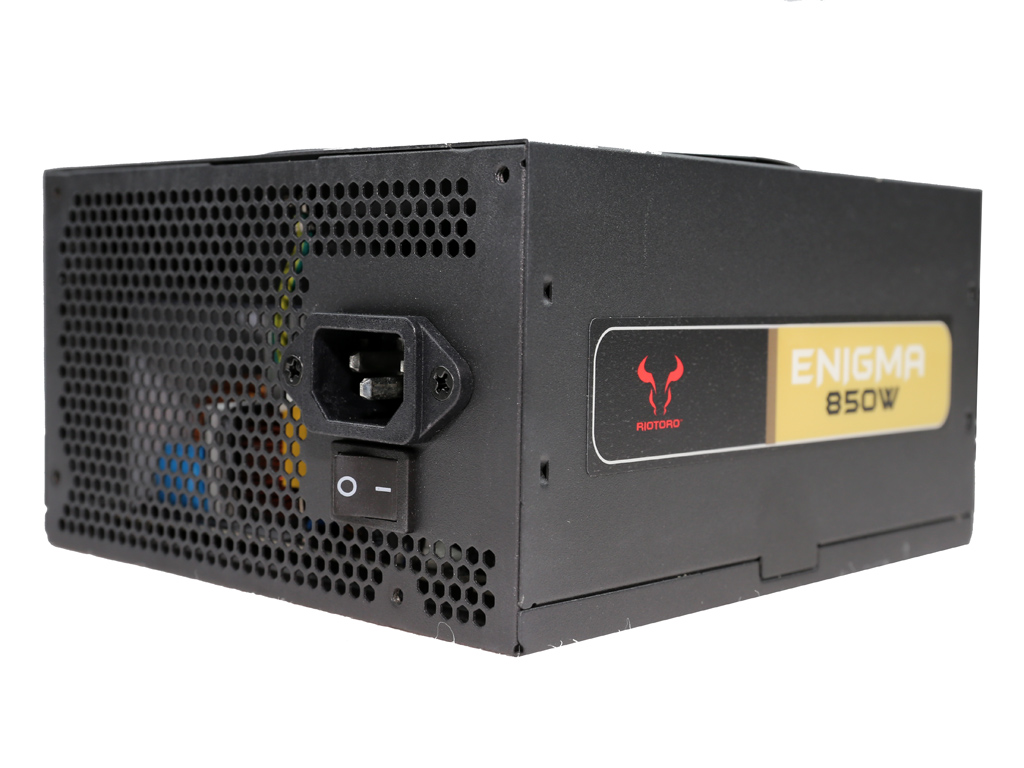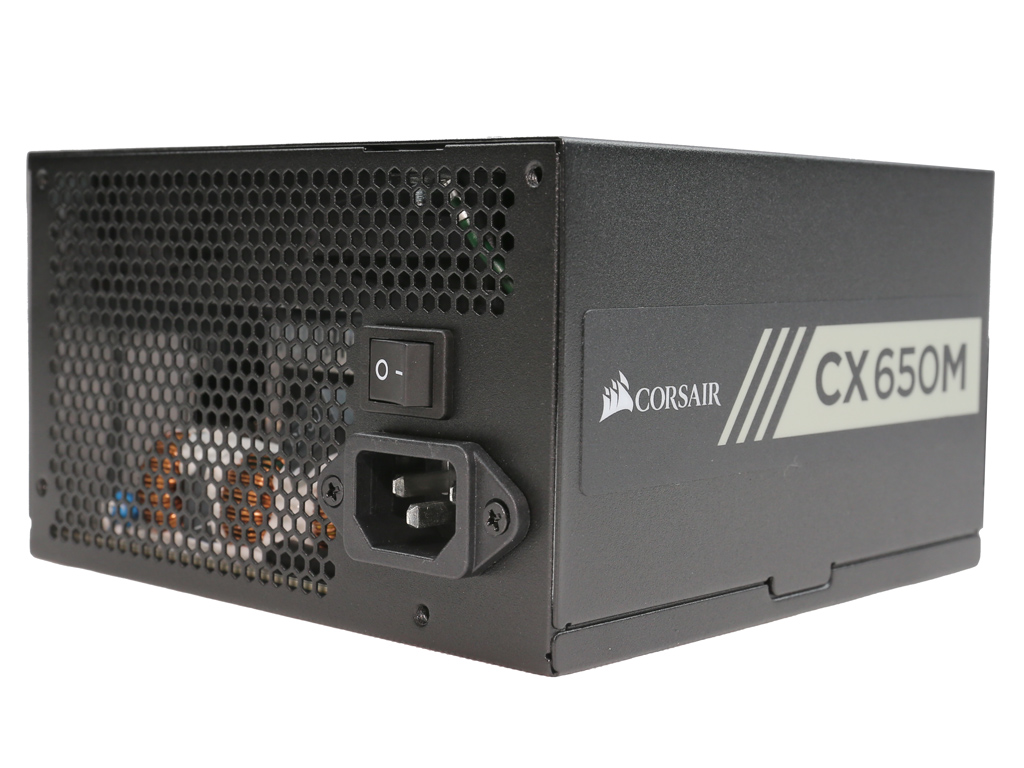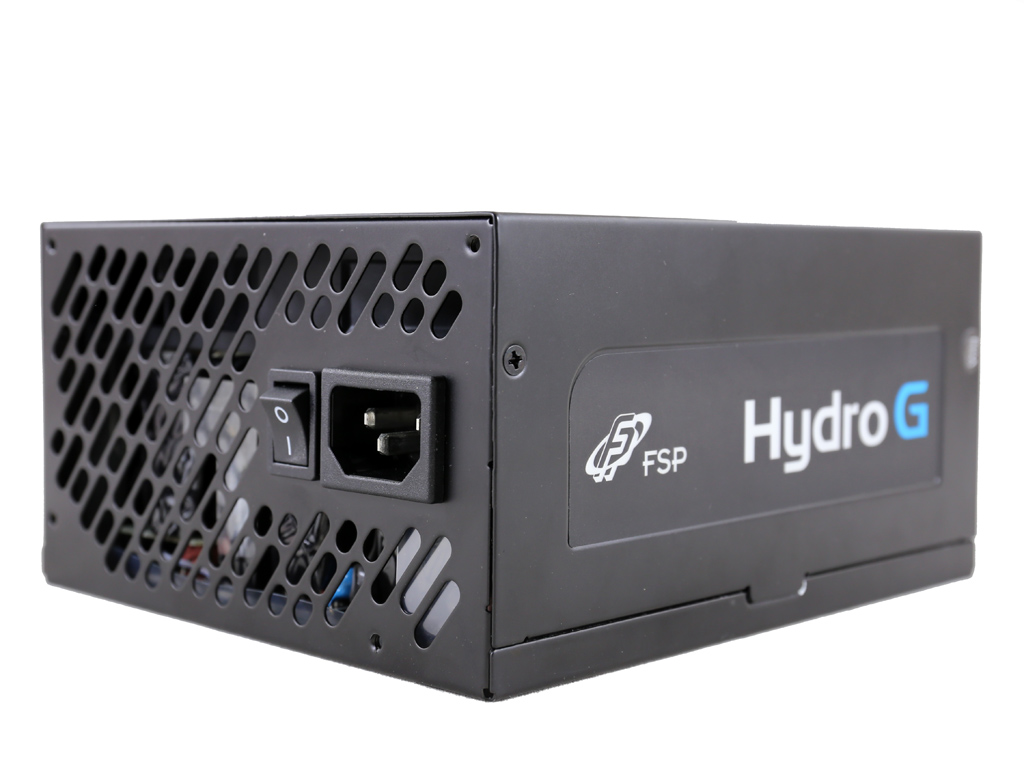Riotoro Enigma 850W PSU Review
Riotoro is a newly founded company that's currently involved in the PSU, chassis, cooling, and gaming peripheral markets. It only has two PSU lines with three total members, and today we're looking at the Enigma 850W, its flagship offering.
Why you can trust Tom's Hardware
Load Regulation, Hold-Up Time, And Inrush Current
To learn more about our PSU tests and methodology, please check out How We Test Power Supply Units.
Primary Rails And 5VSB Load Regulation
Load Regulation testing is detailed here.
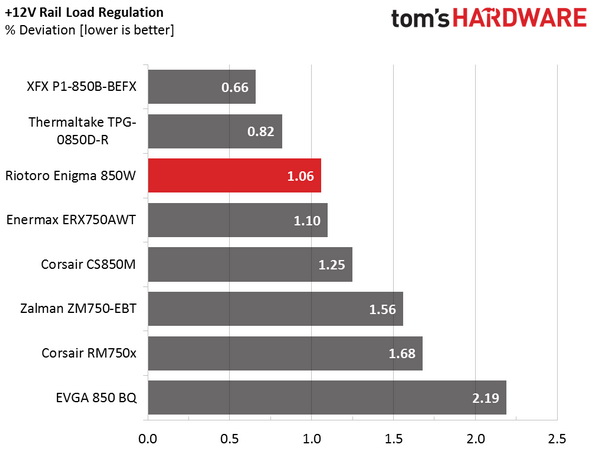
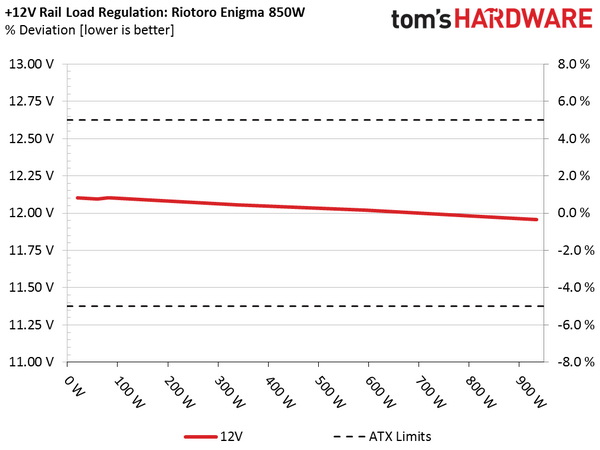
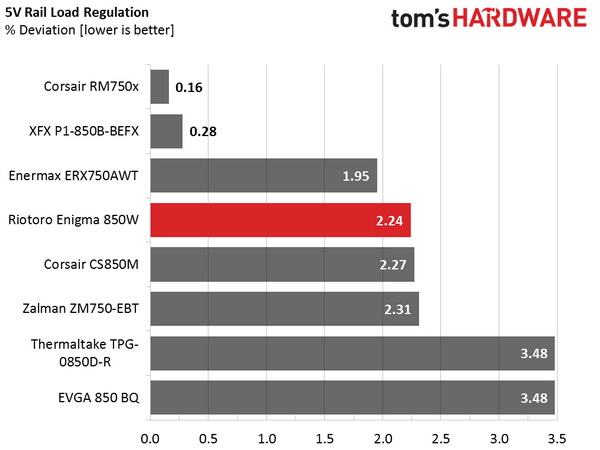
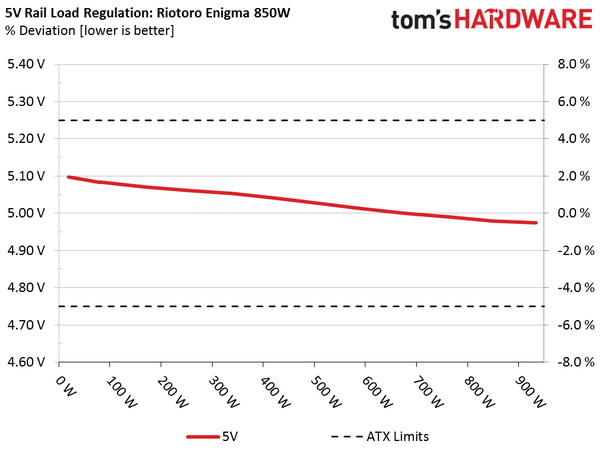
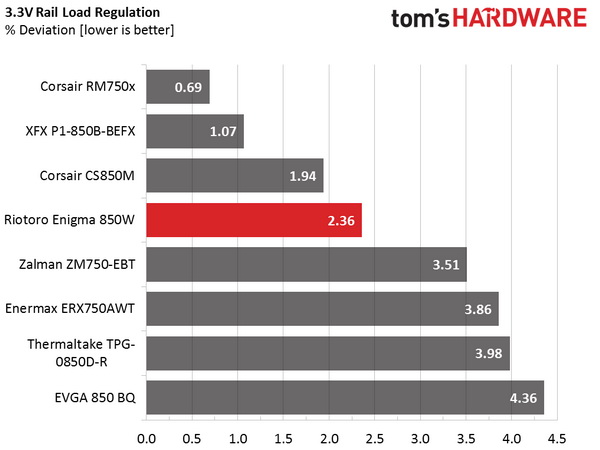
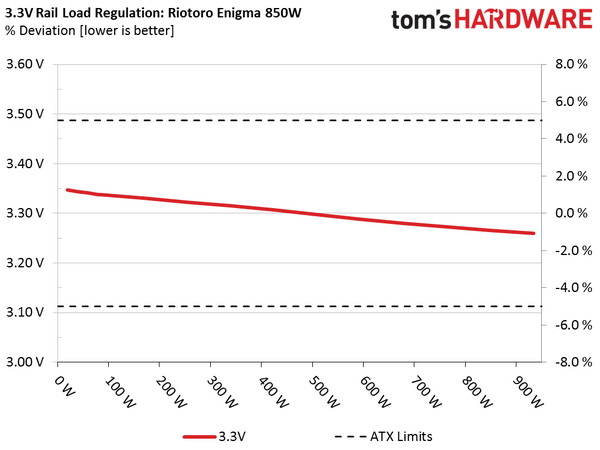
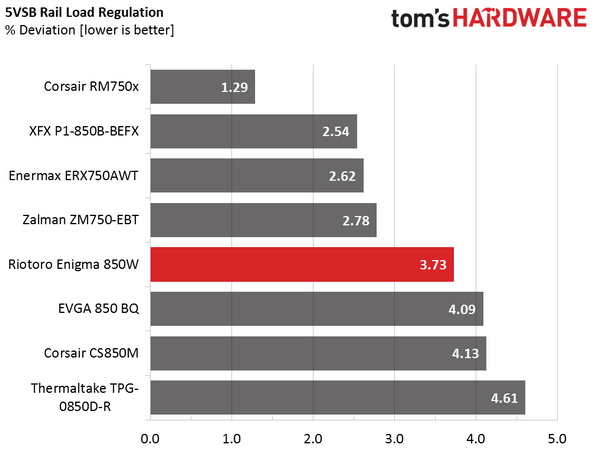
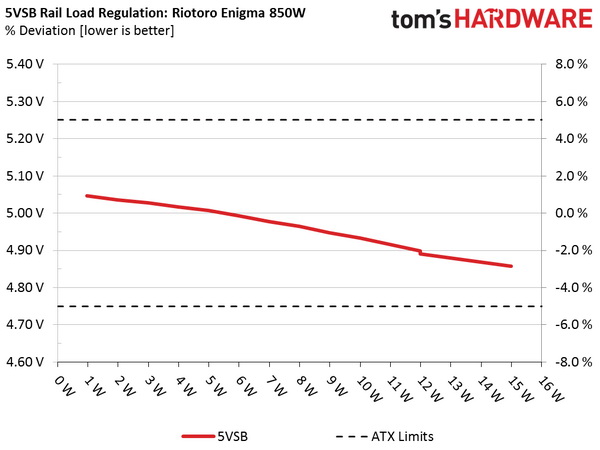
Hold-Up Time
Our hold-up time tests are described in detail here.
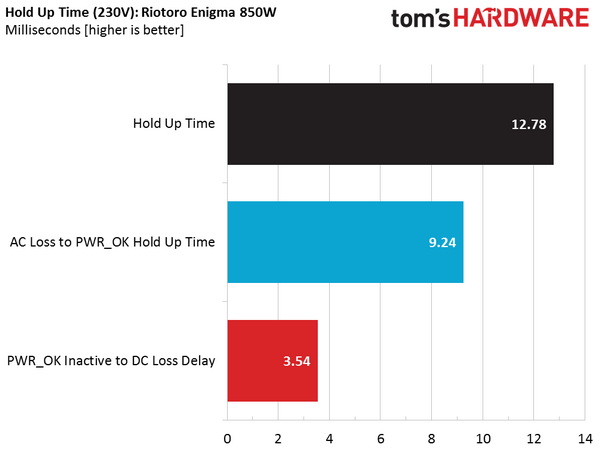
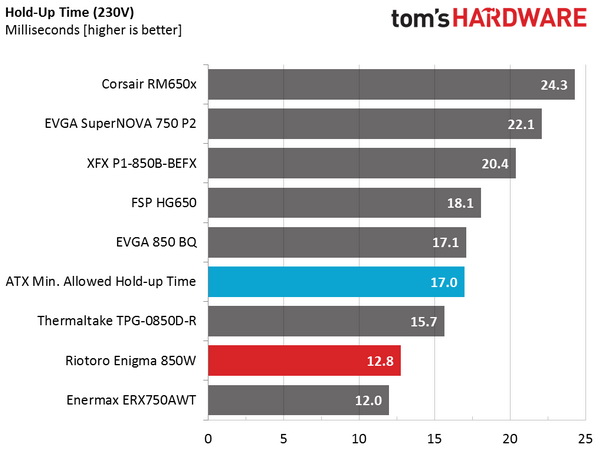
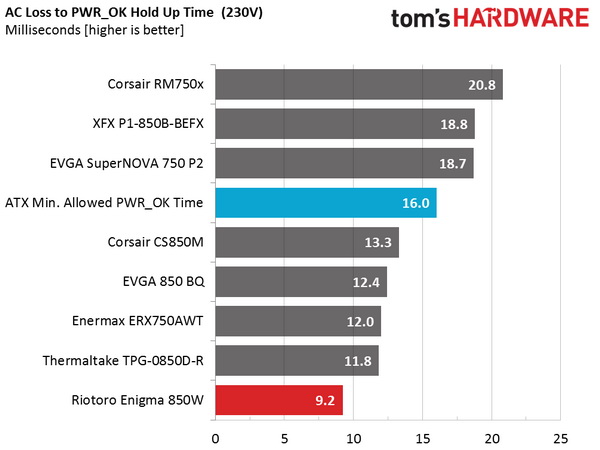
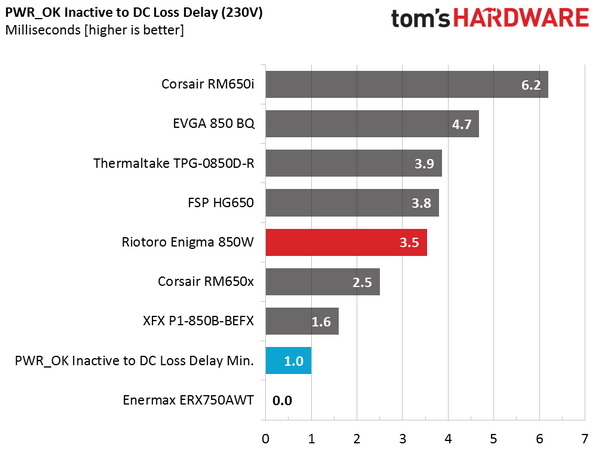
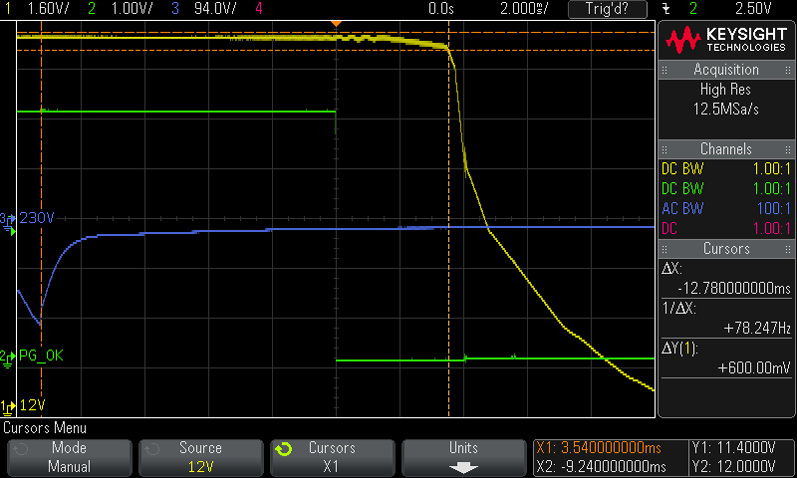
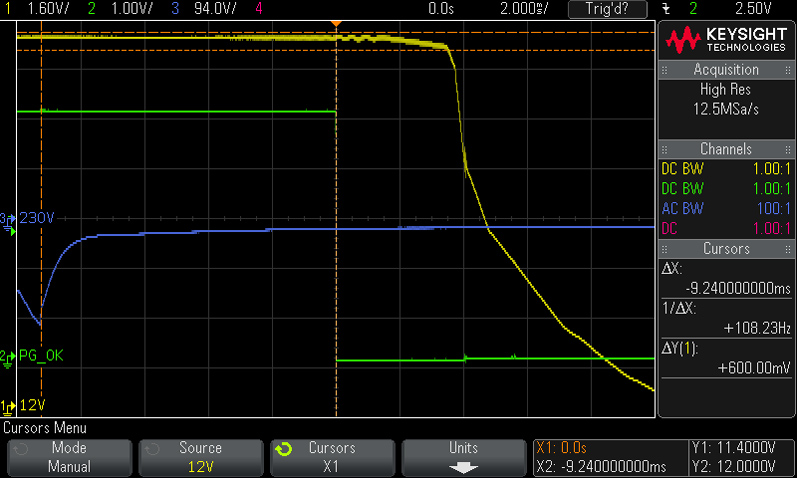
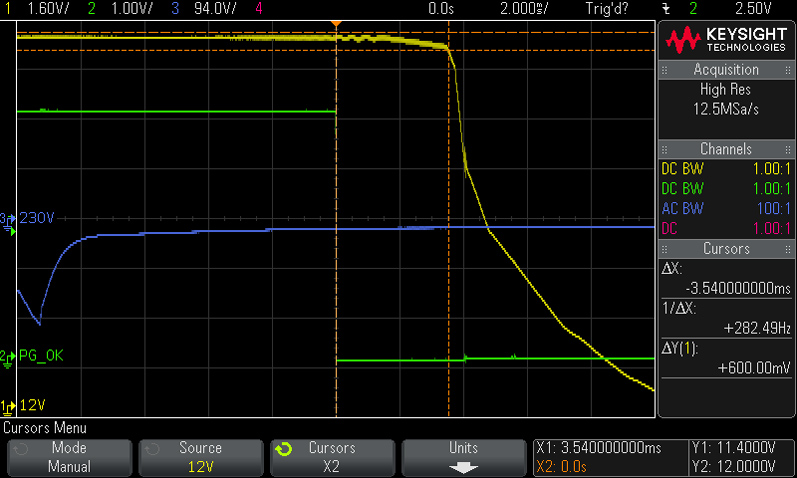
The registered hold-up time we measured is low. The only good news is that Great Wall tuned the power-good signal to drop before the rails go out of spec. Still, we'd like to see the delay closer to 1ms, as the ATX spec requires.
Inrush Current
For details on our inrush current testing, please click here.
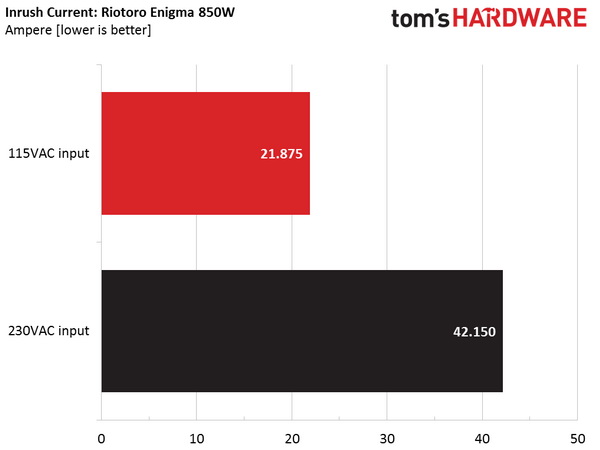
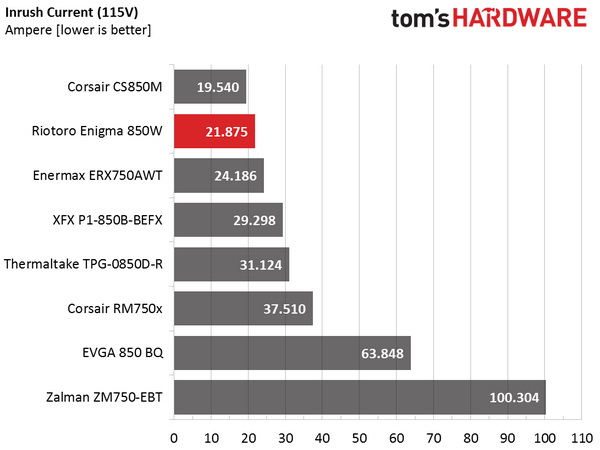
The inrush current is low with 115V input, and at normal levels with 230V.
Load Regulation And Efficiency Measurements
The first set of tests reveals the stability of the voltage rails and the Enigma 850's efficiency. The applied load equals (approximately) 10 to 110 percent of the PSU's maximum load in increments of 10 percentage points.
Get Tom's Hardware's best news and in-depth reviews, straight to your inbox.
We conducted two additional tests. During the first, we stressed the two minor rails (5V and 3.3V) with a high load, while the load at +12V was only 0.1A. This test reveals whether a PSU is Haswell-ready or not. In the second test, we determined the maximum load the +12V rail could handle with minimal load on the minor rails.
| Test # | 12V | 5V | 3.3V | 5VSB | DC/AC (Watts) | Efficiency | Fan Speed | Fan Noise | Temps (In/Out) | PF/AC Volts |
|---|---|---|---|---|---|---|---|---|---|---|
| 1 | 5.221A | 1.965A | 1.975A | 0.996A | 84.753 | 86.136% | 825 RPM | 25.9 dB(A) | 38.56°C | 0.955 |
| 12.102V | 5.083V | 3.338V | 5.007V | 98.394 | 41.50°C | 115.07V | ||||
| 2 | 11.482A | 2.950A | 2.971A | 1.198A | 169.604 | 90.210% | 870 RPM | 27.0 dB(A) | 39.39°C | 0.960 |
| 12.086V | 5.070V | 3.330V | 4.993V | 188.011 | 42.54°C | 115.06V | ||||
| 3 | 18.125A | 3.456A | 3.489A | 1.405A | 254.862 | 91.060% | 905 RPM | 29.4 dB(A) | 39.47°C | 0.972 |
| 12.071V | 5.061V | 3.322V | 4.978V | 279.883 | 43.44°C | 115.06V | ||||
| 4 | 24.759A | 3.954A | 3.979A | 1.611A | 339.689 | 90.994% | 1020 RPM | 31.8 dB(A) | 39.88°C | 0.979 |
| 12.057V | 5.053V | 3.315V | 4.965V | 373.309 | 45.04°C | 115.05V | ||||
| 5 | 31.067A | 4.967A | 4.988A | 1.815A | 424.680 | 90.553% | 1140 RPM | 35.3 dB(A) | 41.70°C | 0.984 |
| 12.044V | 5.040V | 3.307V | 4.948V | 468.984 | 47.29°C | 115.05V | ||||
| 6 | 37.388A | 5.967A | 6.001A | 2.025A | 509.586 | 89.827% | 1210 RPM | 37.6 dB(A) | 41.91°C | 0.987 |
| 12.031V | 5.026V | 3.298V | 4.933V | 567.294 | 48.64°C | 115.05V | ||||
| 7 | 43.724A | 6.987A | 7.020A | 2.235A | 594.568 | 88.966% | 1295 RPM | 39.8 dB(A) | 42.78°C | 0.990 |
| 12.018V | 5.013V | 3.288V | 4.915V | 668.306 | 50.55°C | 115.06V | ||||
| 8 | 50.076A | 8.003A | 8.049A | 2.446A | 679.459 | 87.983% | 1430 RPM | 41.9 dB(A) | 44.19°C | 0.992 |
| 12.003V | 5.000V | 3.280V | 4.898V | 772.258 | 52.87°C | 115.10V | ||||
| 9 | 56.884A | 8.516A | 8.584A | 2.451A | 764.504 | 87.075% | 1575 RPM | 43.7 dB(A) | 44.59°C | 0.993 |
| 11.988V | 4.990V | 3.273V | 4.891V | 877.982 | 54.54°C | 115.06V | ||||
| 10 | 63.437A | 9.045A | 9.093A | 3.084A | 849.301 | 85.903% | 1680 RPM | 45.2 dB(A) | 45.65°C | 0.994 |
| 11.974V | 4.979V | 3.265V | 4.858V | 988.677 | 57.03°C | 115.06V | ||||
| 11 | 70.620A | 9.056A | 9.106A | 3.089A | 934.192 | 84.809% | 1680 RPM | 45.2 dB(A) | 46.44°C | 0.995 |
| 11.958V | 4.974V | 3.260V | 4.852V | 1101.530 | 58.54°C | 115.05V | ||||
| CL1 | 0.100A | 16.027A | 16.004A | 0.004A | 133.644 | 83.910% | 1095 RPM | 33.5 dB(A) | 42.81°C | 0.960 |
| 12.098V | 4.980V | 3.287V | 5.019V | 159.271 | 48.68°C | 115.10V | ||||
| CL2 | 70.791A | 1.003A | 1.003A | 1.002A | 860.744 | 86.253% | 1680 RPM | 45.2 dB(A) | 46.51°C | 0.994 |
| 11.971V | 5.041V | 3.297V | 4.956V | 997.929 | 57.31°C | 115.06V |
Load regulation at +12V is tight enough. On the minor rails it falls within 2.5%, so we consider that satisfactory. The 5VSB rail in these tests suffers a greater deviation of around 3.7%, but because it's still within the ATX specification, we aren't concerned.
The Enigma's fan profile is quite relaxed up to the 40% load test, and output noise exceeds 40 dB(A) only at higher loads with 80% of the PSU's maximum-rated capacity. Although the max temperature for full power delivery is restricted at 40°C, Great Wall still tuned the fan profile for higher operational temperatures. This is a good thing, of course.
Our results show the Enigma easily meeting the 80 PLUS Gold requirements with 20% and 50% load. However, it falls short during the full-load test where it should achieve at least 87% efficiency. As we already know, though, 80 PLUS conducts its tests at low ambient temperatures, where efficiency is higher.
Current page: Load Regulation, Hold-Up Time, And Inrush Current
Prev Page A Look Inside And Component Analysis Next Page Efficiency, Temperature, And Noise
Aris Mpitziopoulos is a contributing editor at Tom's Hardware, covering PSUs.
